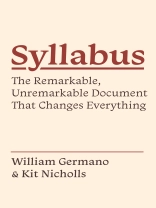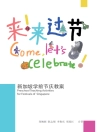How redesigning your syllabus can transform your teaching, your classroom, and the way your students learn
Generations of teachers have built their classes around the course syllabus, a semester-long contract that spells out what each class meeting will focus on (readings, problem sets, case studies, experiments), and what the student has to turn in by a given date. But what does that way of thinking about the syllabus leave out—about our teaching and, more importantly, about our students’ learning?
In Syllabus, William Germano and Kit Nicholls take a fresh look at this essential but almost invisible bureaucratic document and use it as a starting point for rethinking what students—and teachers—do. What if a teacher built a semester’s worth of teaching and learning backward—starting from what students need to learn to do by the end of the term, and only then selecting and arranging the material students need to study?
Thinking through the lived moments of classroom engagement—what the authors call “coursetime”—becomes a way of striking a balance between improv and order. With fresh insights and concrete suggestions, Syllabus shifts the focus away from the teacher to the work and growth of students, moving the classroom closer to the genuinely collaborative learning community we all want to create.
Despre autor
William Germano is professor of English at Cooper Union. His books include
Getting It Published and
From Dissertation to Book. Twitter @Wm Germano
Kit Nicholls is director of the Center for Writing at Cooper Union, where he teaches writing, literature, and cultural studies.












